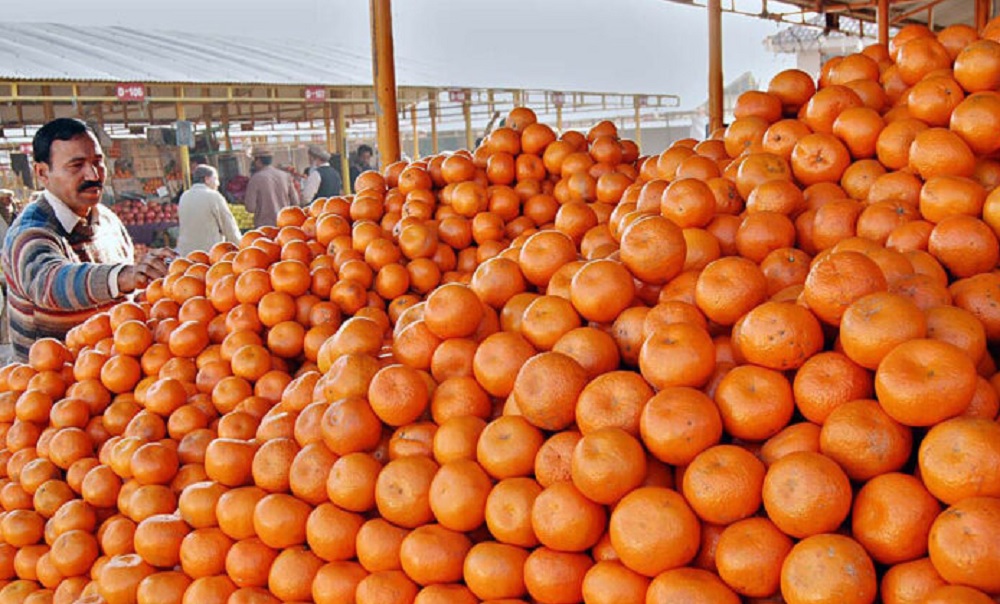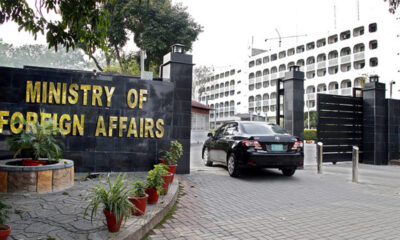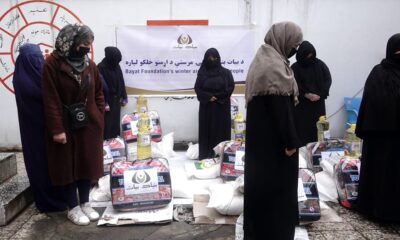Business
World Bee Day: Depending on the survival of bees

The UN General Assembly has designated May 20 as World Bee Day to raise awareness of the importance of bees, support for beekeeping and the effects of bee pollination on sustainable development of agriculture and food supply.
According to the UN, bees are under threat. Present species extinction rates are 100 to 1,000 times higher than normal due to human impacts.
Close to 35 percent of invertebrate pollinators, particularly bees and butterflies, and about 17 percent of vertebrate pollinators, such as bats, face extinction globally.
If this trend continues, nutritious crops, such as fruits, nuts and many vegetable crops will be substituted increasingly by staple crops like rice, corn and potatoes, eventually resulting in an imbalanced diet.
But government, farmers and ordinary citizens can play their part to make sure bees do not become extinct.
Individually people can plant a diverse set of native plants, which flower at different times of the year; buying raw honey from local farmers; buying products from sustainable agricultural practices; avoiding pesticides, fungicides or herbicides in our gardens; protect wild bee colonies when possible; make a bee water fountain by leaving a water bowl outside; and raising awareness by sharing this information within our communities and networks.
Beekeepers and farmers can also help by reducing, or changing the usage of pesticides; diversifying crops as much as possible, and/or planting attractive crops around the field.
Governments in turn can strengthen the participation of local communities in decision-making, in particular that of indigenous people, who know and respect ecosystems and biodiversity; enforcing strategic measures, including monetary incentives to help change; increasing collaboration between national and international organizations, organizations and academic and research networks to monitor and evaluate pollination services.
The number of beekeepers have meanwhile grown in Afghanistan over the past few years and today local honey production exceeds the two metric ton mark.
Akbar Rustami, director of information and spokesman for the Ministry of Agriculture, Irrigation and Livestock (MAIL), said recently that honey production reached 2,490 metric tons in Afghanistan last solar year.
According to Rustami, Paktia topped the list with 899 tons of honey, followed by Nangarhar with 500 tons and Khost with 416 tons, which are the most important honey producers in the country. Herat, Laghman, Badakhshan, Kunduz and Bamyan are also on the list of major honey producing provinces.
Rustami said recently that there are currently 6,757 large and small beekeeping farms across the country, most of them in Badghis, Herat, Badakhshan, Paktia, Kunduz, Daikundi, Bamyan, Logar, Sar-e-Pul, Farah, Maidan Wardak, Kapisa, Takhar, Baghlan and Khost provinces.
Rustami said that Badghis with 722, Herat with 593, Paktia with 550 and Badakhshan with 526 beekeeping farms are at the top of the beekeeping table.
Beekeeping is growing as a lucrative business and its products have a good domestic and foreign market.
One kilo of pure honey is sold in the domestic market from 500 to two thousand afghanis, depending on its type.
Meanwhile, the amount of honey production in 1398 had reached two thousand and one hundred tons, and this figure has increased by 390 tons in the past year.
Business
Pakistan’s kinno exports falter as tensions with Afghanistan continue

Pakistan’s kinno exports remain far below potential as regional tensions, high freight costs and weak government support continue to choke the citrus trade.
Despite being a leading global citrus producer, Pakistan is expected to export just 400,000–450,000 tonnes of kinno in the 2025–26 season, compared with an estimated capacity of 700,000–800,000 tonnes.
Exports in 2024–25 stood at around 350,000–400,000 tonnes, mainly to Russia, the UAE, Saudi Arabia, Afghanistan, Indonesia and Central Asia. While better fruit quality this season has raised hopes, persistent crossing disruptions—especially with Afghanistan—and transport bottlenecks have offset gains.
Growers say prices have collapsed sharply, forcing panic sales. Rates for large kinno have fallen from over Rs120 per kg early in the season to as low as Rs75, while smaller fruit is selling for Rs35–40 per kg amid weak demand.
Industry leaders warn the crisis is crippling processing units and jobs. More than 100 factories reportedly failed to open this season, with dozens more shutting down as exports stall. Cold storages in Sargodha are nearly full, putting fruit worth millions of dollars at risk of spoilage, while growers fear losses of up to Rs10 billion.
Exporters are urging the government to urgently resolve issues, subsidise logistics, and help access alternative markets, warning that prolonged inaction could devastate farmers, workers and the wider economy.
Business
Pezeshkian pledges to facilitate Iran-Afghanistan trade

Iranian President Masoud Pezeshkian has said that Tehran will facilitate trade and economic exchanges with Afghanistan, including easing procedures at customs and local marketplaces.
He made the remarks during a televised interview following his visit to South Khorasan province, which shares a border with Afghanistan.
Pezeshkian, in a separate event addressing local business leaders, highlighted the province’s strategic advantages, citing its rich mineral resources, proximity to neighboring countries such as Afghanistan and Pakistan, and access to the ocean via the Chabahar port. He described the region as “a golden opportunity not found everywhere,” emphasizing its potential for economic growth and cross-border commerce.
Business
Afghanistan-Kazakhstan banking ties discussed in Kabul meeting
-

 Latest News4 days ago
Latest News4 days agoAfghan border forces prevent illegal entry of hundreds into Iran
-

 Latest News2 days ago
Latest News2 days agoAfghanistan signs 30-year deal for marble mining in Daikundi
-

 Latest News3 days ago
Latest News3 days agoPakistan summons Afghan diplomat over deadly attack in North Waziristan
-

 Latest News2 days ago
Latest News2 days agoAfghan health minister calls for medical cooperation between Kabul and New Delhi
-

 Latest News3 days ago
Latest News3 days agoJapan allocates nearly $20 million in humanitarian aid for Afghanistan
-

 Latest News3 days ago
Latest News3 days agoKarzai urges reopening of girls’ schools and universities for Afghanistan’s bright future
-

 Health5 days ago
Health5 days agoAfghanistan seeks India’s support in standardizing traditional medicine
-

 Business5 days ago
Business5 days agoAfghanistan-Kazakhstan banking ties discussed in Kabul meeting

























